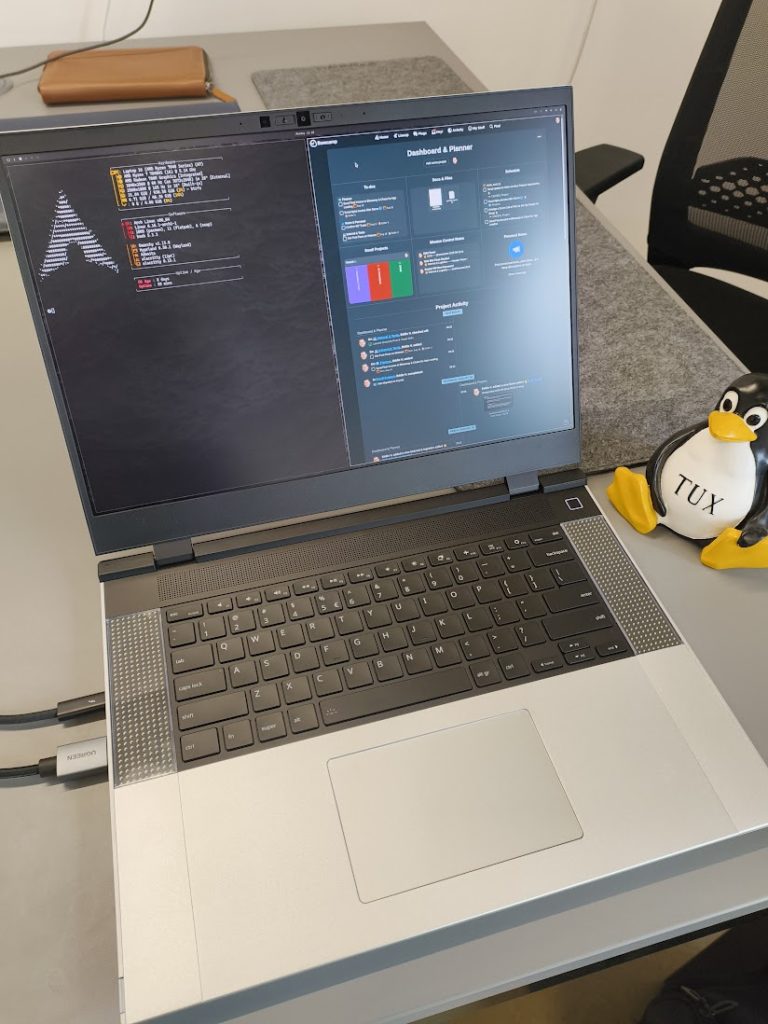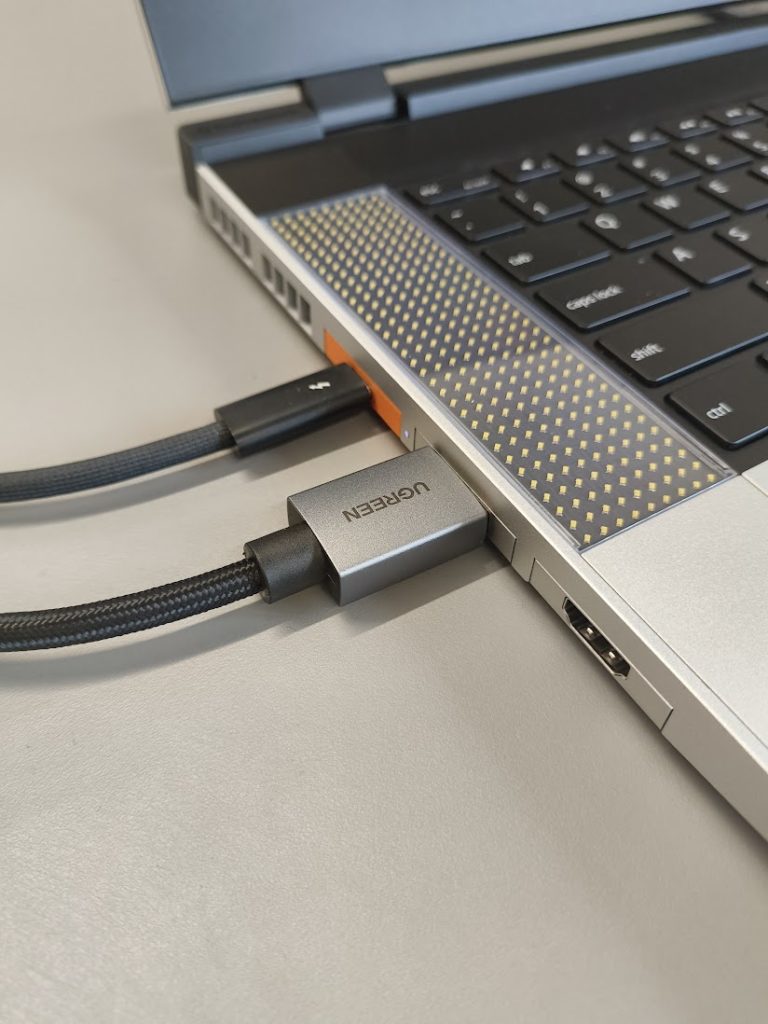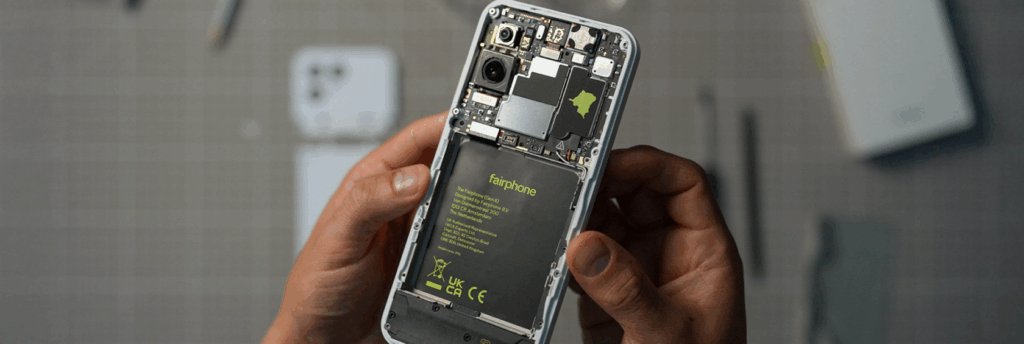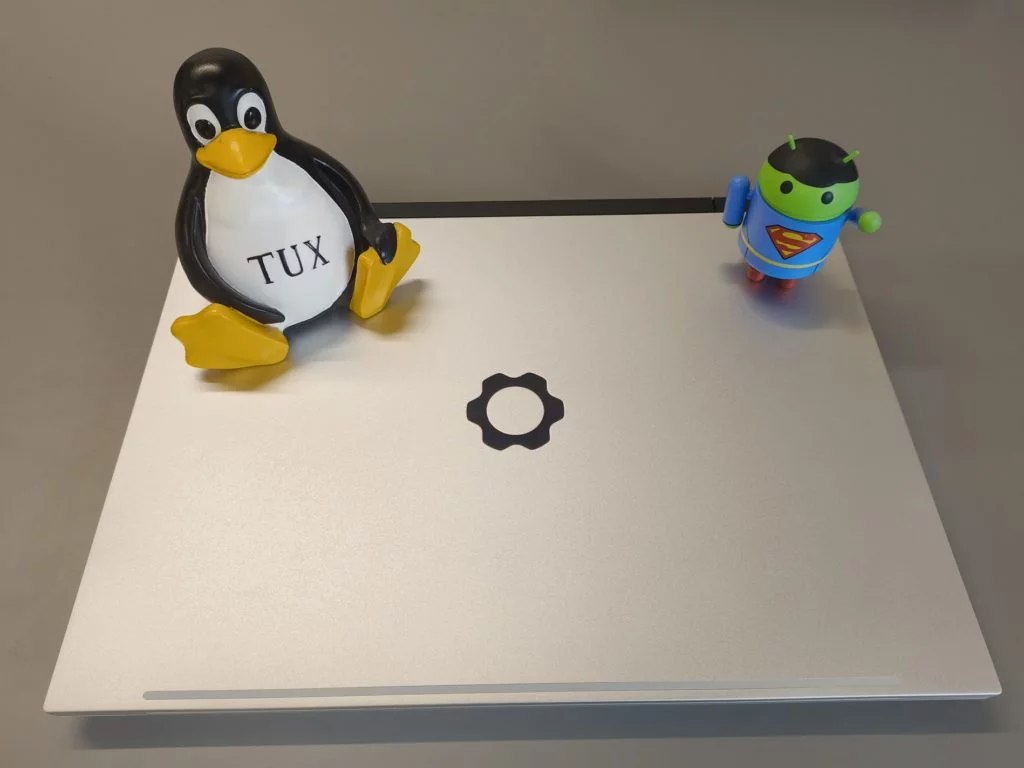As we detailed in our previous post on Omarchy – we have been Open Source and Linux advocates here at Mission Control for well over 10 years. And back in those days, believe me, it was a serious LABOUR of love (emphasis on labour). But over the past few years, the Linux world and new users like DHH have made Linux so much more accessible and inviting for small development shops like ours – as well as general and slightly adventurous users outside the developer community.
Sure we love and advocate for Tiling Window Managers these days – and as you know – feel Omarchy is the perfect setup for businesses like ours, we also love the flexibility and configurability of long-standing DE projects like KDE Plasma, XFCE and even Gnome. Regardless of what you slap on top of Linux – the core is still the same – an open and highly flexible computing experience that Windows and macOS can’t touch.
Luckily for us, the same is starting to happen with hardware.
For many years, Linux-dedicated hardware vendors like System76 and Tuxedo Computers (not to mention Slimbook, Starlabs and others) have fought the good fight for Linux-first laptops, traditionally using Clevo and Tongfang chassis as a platform. And here at Mission HQ we have owned our fair share of System76 and Tuxedo laptops and desktops in particular. But late last year we purchased our first machine from Framework – the Framework 16 (we like bigger screens here) and we were simply blown away with the Linux ‘spirit’ of managing, upgrading, and tweaking our hardware to our hearts’ delight.
From colourful plug & play extension cards, to multiple keyboard and bezel options and even interactive LCD Matrix and colourshift spacer modules – these things are just plan FUN to setup and use.

And this is EXACTLY the feeling we all get from Linux!
For example, as a small business we have landed on the 28-inch BenQ Programming Monitors as the best 3:2 bang for the buck – and absolutely perfect for Tiling WMs and Hyprland in particular. For some reason, no matter what we try, we cannot get the full 60Hz resolution from HDMI on Linux – no matter how many tweaks and patches and workarounds we have tried. Enter Displayport – and the handy ability to simply slide in a Displayport adaptor into one of our Framework 16 input slots – MAGIC.

And when we head to a meeting room or a client’s office to display a presentation or discuss a build, we simply swap out the Displayport expansion card for HDMI – and voila! Absolutely no dongles needed here. It seems like a small thing, but to us, it’s really a HUGE thing. It means the hardware changes with our needs – not the other way around.
Apple used to tell us how what ports to use – and if our external devices or desktop setup didn’t exactly fit – somehow that was OUR fault and to a dongle we were pointed – making our desks, our bags, and our computing control a complete and utter mess. With Framework, we design the machine to us, and keep re-designing and tweaking them as we go. It’s a sustainable way to go about hardware, but beyond the lofty ideals, it’s simply BETTER for what we do.
Thankfully, we are starting to see something similar in the Phone space. For years we have held out hope for a Linux-powered Smartphone that could actually be used as a daily driver. From teases by Purism, Pine64 and others – we have come tantalisingly close. But we have to face facts (here in the UK at least), some Apps are a MUST HAVE for daily driving – and frankly as an Android and iOS Developer, we can’t really be living on low-adoption software no matter how much we want to break free of the Apple and Google stranglehold.
Enter Fairphone.
You can say we have been ‘Fairphone-curious’ for a few years. The problem is – we are tech-Magpies and are snobs for beautiful hardware as well as beautiful software – and previous iterations of the Fairphone concept have just been…well…clunky.
Thankfully, Fairphone has heard the criticism from the community and their latest iteration – the Fairphone 6 – comes as close to a ‘normal flagship’ Android Phone as we’ve seen. It’s modular, fully repairable, well built, and runs Android like a champ (!) That means all our banking Apps work well, our customer Apps work like a dream, and we have a piece of hardware, like Framework, we can make our own.

We’re a Mobile App Developer at the end of the day – so we are swimming in iPhones, Foldables, flagships from Samsung, Google, Oppo, OnePlus, Nothing, and even Huawei here – but we are also choosing to carry Fairphones – as we’re getting that same vibe, that BUZZ from a little bit more control. In the phone world – this is minor – but it’s a step in the right direction.
After all, every little bit of freedom you regain from your computing software (and now hardware!) is well worth the fight.
And sometimes, it’s even worth some temporary rewiring and discomfort. While we handle flagship phones all day when testing our Apps and builds, it’s nice to head home with something a bit more ‘our own’ in our bags and our pockets.
So for now, we’re sailing forward with more sustainable and open hardware from Framework and Fairphone. At the end of the day, we’re having a LOT more fun in our computing lives – and while it’s better for a number of lofty reasons – we find it selfishly works better for us and matches the software we develop and love perfectly.

